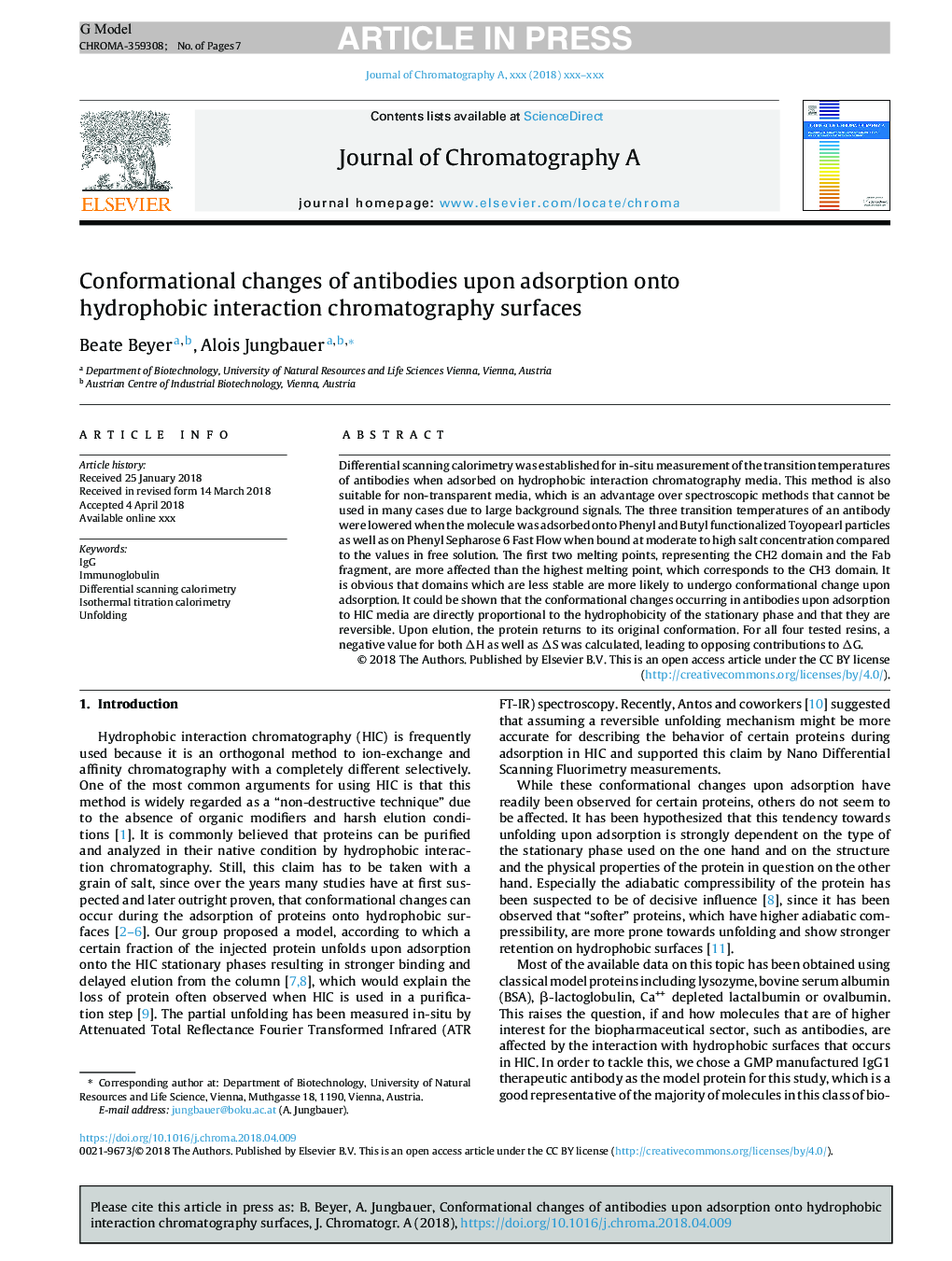| Article ID | Journal | Published Year | Pages | File Type |
|---|---|---|---|---|
| 7608185 | Journal of Chromatography A | 2018 | 7 Pages |
Abstract
Differential scanning calorimetry was established for in-situ measurement of the transition temperatures of antibodies when adsorbed on hydrophobic interaction chromatography media. This method is also suitable for non-transparent media, which is an advantage over spectroscopic methods that cannot be used in many cases due to large background signals. The three transition temperatures of an antibody were lowered when the molecule was adsorbed onto Phenyl and Butyl functionalized Toyopearl particles as well as on Phenyl Sepharose 6 Fast Flow when bound at moderate to high salt concentration compared to the values in free solution. The first two melting points, representing the CH2 domain and the Fab fragment, are more affected than the highest melting point, which corresponds to the CH3 domain. It is obvious that domains which are less stable are more likely to undergo conformational change upon adsorption. It could be shown that the conformational changes occurring in antibodies upon adsorption to HIC media are directly proportional to the hydrophobicity of the stationary phase and that they are reversible. Upon elution, the protein returns to its original conformation. For all four tested resins, a negative value for both ÎH as well as ÎS was calculated, leading to opposing contributions to ÎG.
Keywords
Related Topics
Physical Sciences and Engineering
Chemistry
Analytical Chemistry
Authors
Beate Beyer, Alois Jungbauer,
